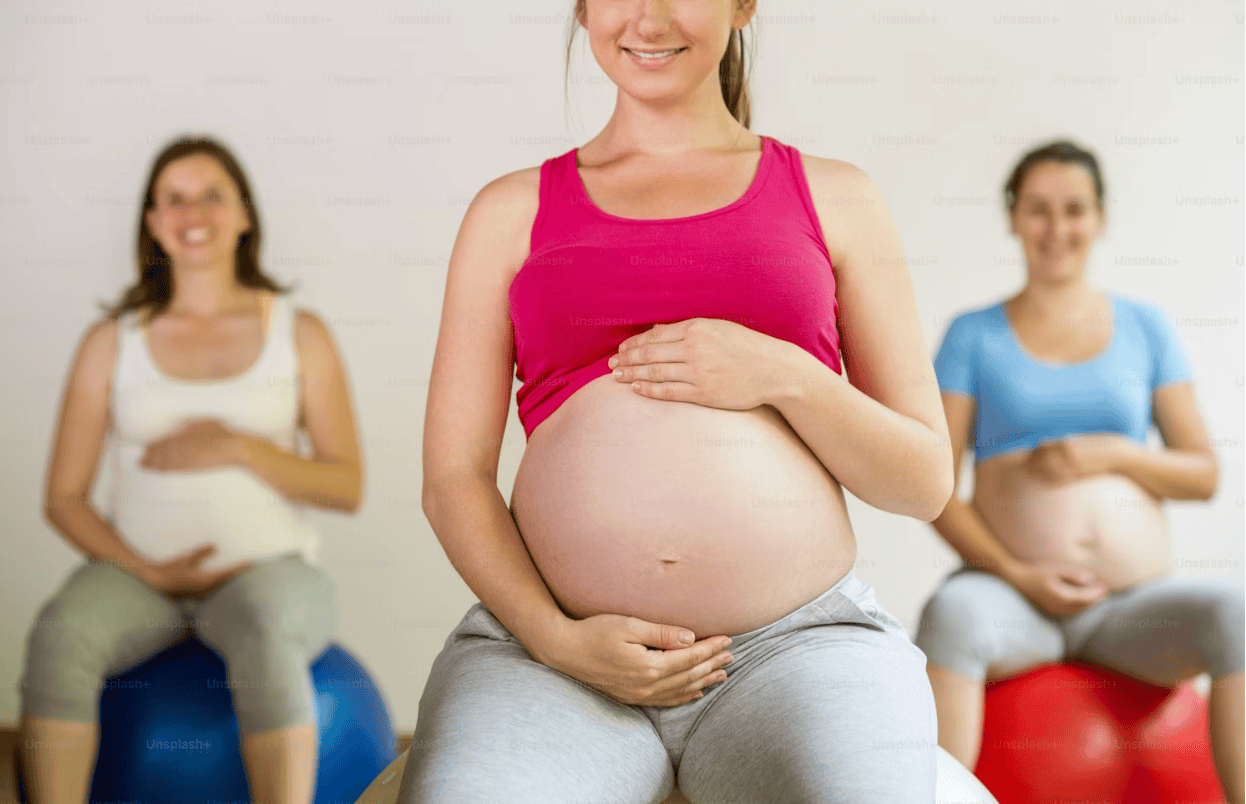
The pelvic floor is a crucial yet often overlooked part of our anatomy. It is a group of muscles akin to a hammock, starting from the pubic bone to the tailbone, which help to support our pelvic organs and contribute to overall core strength and stability. These muscles also act to control the opening and closing of our urethra and anus to allow urine and feces to eliminate, and stay continent (Raizada 2008). Last but certainly not least, the pelvic floor also plays a role in sexual function. For women, the pelvic floor assists with arousal and orgasm as it is in close proximity with the clitoris (Rosenbaum 2007). The pelvic floor undergoes remarkable changes during and after pregnancy, impacting both physical health and daily life.
Pelvic Floor Changes During Pregnancy
During pregnancy, the pelvic floor undergoes several significant changes:
- Increased Pressure: As the baby grows, it exerts additional pressure on the pelvic floor muscles. This pressure can lead to stretching and potential weakening of the muscles.
- Hormonal Effects: Pregnancy hormones, such as relaxin, help loosen the ligaments and muscles in preparation for childbirth, which includes the muscles of the pelvic floor (Aldabe 2012)
- Weight Gain: The added weight from the baby and amniotic fluid increases the load on the pelvic floor, requiring it to work harder to maintain support.
Postpartum Pelvic Floor Changes
After giving birth, the pelvic floor is in a state of recovery and adjustment. Here’s what typically happens:
- Immediate Changes: Right after delivery, the pelvic floor muscles are often stretched and weakened. This can lead to issues like incontinence (leakage of urine) or difficulty controlling bowel movements. (Bø 2017)
- Healing Process: The pelvic floor gradually heals, but the extent and speed of recovery can vary. Factors like the type of delivery (vaginal or cesarean), the size of the baby, and any tearing or episiotomy (a surgical cut made during delivery) can influence recovery.
- A Note on Cesareans: While there may not be direct trauma to the pelvic floor such as during a vaginal delivery, an accumulation of scar tissue above the pelvic floor can impact the ability for the muscles to be well coordinated and strong, and can still lead to pelvic floor dysfunction. (Goom 2019)
How to Support Your Pelvic Floor Postpartum
- Physical Therapy: Here at Femina/fusion PT our therapists can provide tailored exercises and strategies to help with recovery. We can also assess and address any issues related to pelvic pain or dysfunction.
- Gradual Return to Exercise: Start with gentle exercises and gradually increase intensity as your body allows. Avoid high-impact activities until you have the strength and stability in your pelvic floor, which is typically not recommended until at least three months postpartum. Current guidelines suggest consulting with a physical therapist before returning to high impact activities, book an appointment for an assessment to see if you are return to run ready! (Goom 2019)
- Good Posture and Body Mechanics: Maintaining proper posture and using correct body mechanics can reduce the strain on your pelvic floor and promote healing during the postpartum period.
When to Seek Help
If you experience persistent symptoms such as urinary or fecal incontinence, pelvic pain, or a feeling of heaviness in the pelvic area, it’s essential to consult with a healthcare provider. At Femina/Fusion physical therapy, all of our therapists are trained to be able to assess and treat any pelvic floor dysfunction you may be experiencing through a variety of exercise-based and manual therapy treatments. Reach out to our team to get started.
Resources
Aldabe, D., Ribeiro, D. C., Milosavljevic, S., & Dawn Bussey, M. (2012). Pregnancy-related pelvic girdle pain and its relationship with relaxin levels during pregnancy: a systematic review. European spine journal : official publication of the European Spine Society, the European Spinal Deformity Society, and the European Section of the Cervical Spine Research Society, 21(9), 1769–1776. https://doi.org/10.1007/s00586-012-2162-x
Bø, K. Artal, R., Barakat, R., Brown, W. J., Davies, G. A. L., Dooley, M., Evenson, K. R., Haakstad, L. A. H., Kayser, B., Kinnunen, T. I., Larsénm K., Mottola, M. F., Nygaard, I., van Poppel, M., Stuge, B., Khan, K. M. (2017) Exercise and pregnancy in recreational and elite athletes: 2016/17 evidence summary from the IOC Expert Group Meeting, Lausanne. Part 3-exercise in the postpartum period. Br J Sports Med 51(21), 1516-1525.
Goom, Tom & Donnelly, Grainne & Brockwell, Emma. (2019). Returning to running postnatal – guidelines for medical, health and fitness professionals managing this population. 10.13140/RG.2.2.35256.90880/2.
Raizada, V., & Mittal, R. K. (2008). Pelvic floor anatomy and applied physiology. Gastroenterology clinics of North America, 37(3), 493–vii. https://doi.org/10.1016/j.gtc.2008.06.003
Rosenbaum TY. Pelvic floor involvement in male and female sexual dysfunction and the role of pelvic floor rehabilitation in treatment: a literature review. J Sex Med. 2007;4(1):4-13. doi:10.1111/j.1743-6109.2006.00393.x
